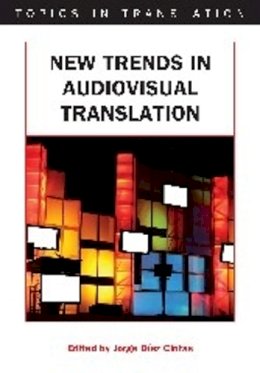
New Trends in Audiovisual Translation
Jorge Díaz Cintas (Ed.)
New Trends in Audiovisual Translation is an innovative and interdisciplinary collection of articles written by leading experts in the emerging field of audiovisual translation (AVT). In a highly accessible and engaging way, it introduces readers to some of the main linguistic and cultural challenges that translators encounter when translating films and other audiovisual productions. The chapters in this volume examine translation practices and experiences in various countries, highlighting how AVT plays a crucial role in shaping debates about languages and cultures in a world increasingly dependent on audiovisual media. Through analysing materials which have been dubbed and subtitled like Bridget Jones’s Diary, Forrest Gump, The Simpsons or South Park, the authors raise awareness of current issues in the study of AVT and offer new insights on this complex and vibrant area of the translation discipline.
Product Details
About Jorge Díaz Cintas (Ed.)
Reviews for New Trends in Audiovisual Translation
Frederic Chaume, Professor of Audiovisual Translation, Universitat Jaume I, Spain
New Trends in Audiovisual Translation is going to be a classic. This is a must read, a prime example of solid scholarship and academic writing in this relatively young branch of Translation Studies. Jorge Díaz Cintas's lucid introduction offers a rare insight into the roots of AVT research, as well as its almost limitless but challenging future potential. The articles in the collection cover judiciously selected topics that constitute the core of AVT research and, indeed, Translation Studies today. AVT research emerges as a truly interdisciplinary research domain of great scientific and social relevance.
Aline Remael, Professor of Audiovisual Translation and Translation Studies, Artesis University College, Antwerp, Belgium The latest collection edited by Jorge Díaz-Cintas impresses by its variety and scope. The present volume serves both to record current trends in Audiovisual Translation and to indicate future avenues of large-scale research.
Dionysios Kapsaskis, Roehampton University in the Journal of Specialised Translation, issue 13
